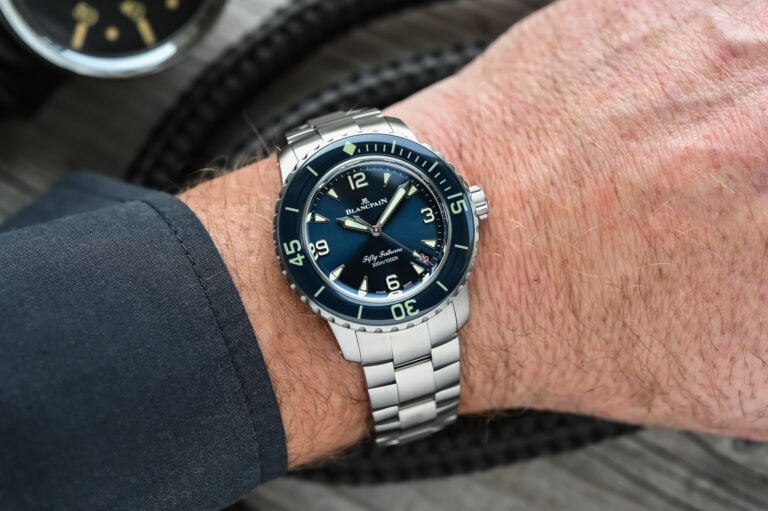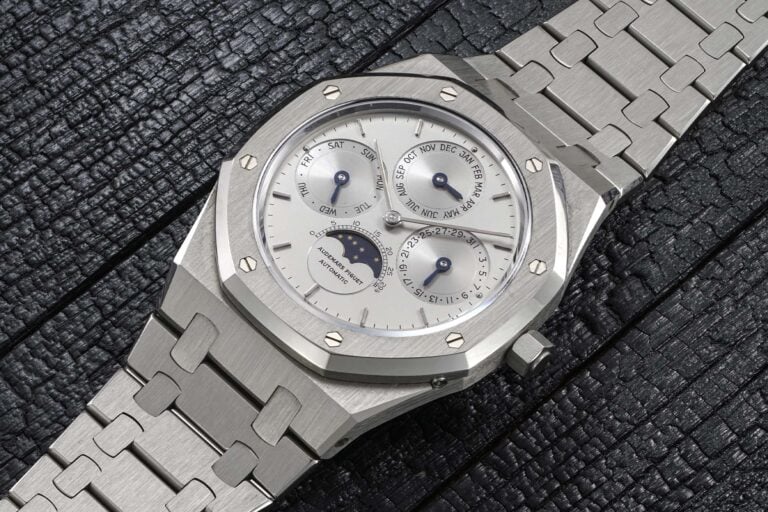SpaceOne is back with an Accessible Wrist-Sized Tellurium
Let the Earth move at its speed or be its master by simply using this fantastic watch's crown.

Last year, the bold and ultra-modern SpaceOne Jumping Hour emerged from the visionary mind of Théo Auffret, a young Parisian independent watchmaker celebrated for crafting intricate timepieces like the Tourbillon Grand Sport and Guillaume Laidet, the man spearheading the revival of Nivada, Excelsior Park and Vulcain. And it’s now time for the duo to present its latest creation – helped with a third guy to the party – and it’s a wrist-sized timing device showing the rotation of planets. Meet the SpaceOne Tellurium.
The first creation of SpaceOne, resembling a sleek spacecraft, garnered significant attention with its futuristic design and a window revealing three concentric discs, indicating seconds at the centre, jumping hours in the middle, and minutes on the periphery. Backed by a good marketing campaign and proposed at a relatively affordable price point, the SpaceOne Jumping Hour, offered on the Kickstarter platform, swiftly sold out.

For the next venture, the “first watchmaking workshop for neo-futuristic horology, dedicated to making stunning Haute Horlogerie affordable“, set its sights on bringing the cosmos closer to the wrist and enlisted the expertise of Olivier Gamiette, a distinguished French designer renowned for his contributions to automotive and watch design. Together, they embarked on a mission to create a timepiece featuring planets, or rather the Earth, Moon and Sun, in a wristwatch-sized tellurium.

A tellurium (also known as Tellurion or Loxocosm), a term derived from the Latin “tellus”, meaning “earth”, is an intricate mechanism and a tool to illustrate the dynamic interplay between day, night, and the changing seasons, all influenced by our planet’s rotation on its axis and its orbit around the Sun. In times past, tellurium depicted these celestial phenomena, tracked the Moon’s age and maintained a perpetual calendar. Many of us may recall encountering simplified versions of this device during high school, sparking wonder and curiosity about the cosmos.

In watchmaking, a standout example featuring the tellurium complication is the Tellurium Johannes Kepler, a remarkable creation from Ulysse Nardin’s Trilogy of Time (thanks to master watchmaker Ludwig Oechslin), unveiled in 1992. Unlike the more common heliocentric models, this masterpiece placed Earth at the centre of its celestial display, inviting us to contemplate our planet’s role in the cosmic dance of time.
The SpaceOne Tellurium
The SpaceOne Tellurium watch embraces a heliocentric display while seamlessly integrating time and date/month indications. Encased within the sleek contours of a grade 5 titanium case, this timepiece evokes the futuristic silhouette of a space capsule. Measuring 50mm in length, 42mm in width, and standing 16mm tall, its unconventional shape defies conventional classification. Topped with a domed sapphire crystal, the watch offers a captivating window into its cosmos-inspired dial.
The SpaceOne Tellurium dial is adorned with the signatures of its creators, Théo Auffret and Olivier Gamiette. Crafted from shimmering aventurine and embellished with stars in polished titanium, it serves as a celestial canvas. At its heart is the Sun, the centre of our cosmic system, while the central hour and minute hands, sharp and precise, stand poised near the dial’s base.
Encircling the Sun, a planetary wheel depicts the perpetual dance of the Earth and Moon. Earth completes its orbit in a year, while the Moon gracefully traverses its cycle in 29.5 days. Positioned at 6 o’clock, a calendar display linked to the tellurium system shows a sliding month and a jumping date, offering practicality and charm.
The dial eschews traditional minutiae and opts for simplicity, with just three indices at 4, 8, and 12 o’clock. Blue PVD-treated titanium apertures, integrated to echo the spacecraft motif, add a touch of futuristic allure. In its entirety, the dial encapsulates the profound and philosophical essence of the cosmos, inviting exploration and contemplation with every glance.
The robust Soprod P024 H4 automatic movement powers the SpaceOne Tellurium and provides reliable energy for its operations. At the heart of its functionality lies the patented Tellurium complication module, which has ensured accurate indications of Earth and Moon positions for well over a century. Position adjustments are effortlessly executed through the crown without any additional corrector pushers, showcasing the ingenuity of its designers.
Turning to the caseback reveals a delightful touch of whimsy, as it lacks a view of the movement in favour of a lighthearted depiction of the solar system. Earth proudly boasts its status as the place of manufacture, perhaps intended as a playful nod to potential extraterrestrial admirers at events like the inaugural Interstellar Watches & Wonders.
Speaking of which – mark your calendars, as the SpaceOne Tellurium will be available for subscription starting on the first day of Watches & Wonders Geneva (9 April 2024), with a four-week subscription window. The price is EUR 2,999; enthusiasts can explore further details and secure their cosmic horology piece by visiting spaceonewatches.com.














2 responses
Probably could’ve used a discreet colour month divider so I don’t have to keep thinking about my ex-wife MARIA.
Hilarious!